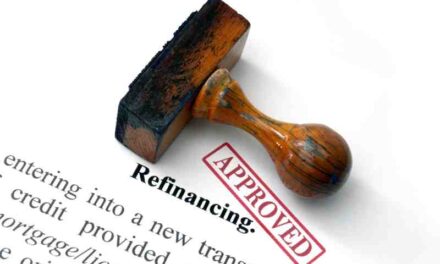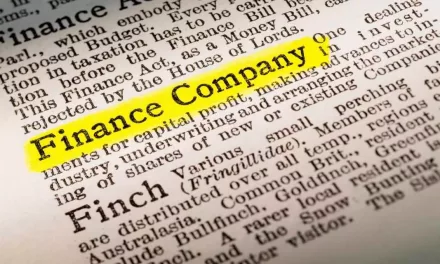Despite the fact that bankruptcy may seem like the end of the world, many businesses that file for bankruptcy are able to continue operations as normal. One of the lesser-known realities is that people may survive bankruptcy and come out on the other side in one piece as well. Because bankruptcy is so poorly understood, let’s take a look at how each sort of bankruptcy filing impacts your financial situation differently.
In the event that you file, what happens?
When you file for bankruptcy, you are granted an automatic stay, which prevents creditors from collecting on your debt. A stay of execution prevents creditors and collections agencies from pursuing debtors for amounts owing. While the stay is in effect, creditors will not be able to garnish your earnings and will not be able to seize any of your secured assets.
There are methods for lowering the legal fees associated with filing for bankruptcy. For example, if your case is straightforward, the nonprofit Upsolve may assist you in generating your bankruptcy petition documents for free. Alternatively, your local legal aid organization may be able to put you in touch with low-cost legal assistance.
As part of the bankruptcy procedure, you’ll be required to enroll in one or more classes. Individuals must seek credit counseling at least 180 days before filing for bankruptcy, and they must also complete a debtor education course if they want to have their debts erased by the government.
Within a couple of weeks of filing, you’ll be required to attend a “creditors meeting,” which is exactly what it sounds like: a court-ordered conference with you, your bankruptcy trustee, and any creditors who choose to be there. Each and every one of them will ask you a series of questions concerning your financial status and your choice to declare bankruptcy.
The Process of Rebuilding Your Credit and Financial Situation After Bankruptcy
A Notice of Discharge will be issued to you by your LIT after the bankruptcy procedure has been completed. This message indicates that you are no longer liable for such debts. You are now completely debt-free, with the exception of any extra commitments that were not included in the bankruptcy.
Secured debts on assets that qualify for an exemption, taxes, child support, alimony, and school loans that are less than seven years old are examples of what qualifies as exempt debt.
The next step is to begin the process of repairing your credit and regaining control of your money. You should have mastered money management skills and be aware of how to adhere to a budget, at the very least. Secured credit cards and other new credit programs are two of the most convenient methods to establish new credit.
When you have an account with a credit card provider that is secured by a cash deposit, you are said to have a secured credit card. Your credit limit is equal to the amount of money you put down as a deposit. Always adhere to and adhere to your budget. Understand your spending and make a strategy to meet your desires and requirements in the future.
You have four alternatives when it comes to secured debts (such as mortgages, vehicle loans, and other similar obligations):
You may walk away from the situation without having to pay the debt. The asset is repossessed by the creditor in accordance with their lien rights, but you are not required to make any payments to them – they just get the item.
You REAFFIRM the debt, which means that you retain ownership of the asset as well as personal responsibility for the repayment of the loan. It is possible that your creditor may seize your asset and pursue you personally for any shortfall if you fail to pay back your loan (i.e., any unpaid balance).
You are reclaiming the asset. During your bankruptcy, you pay the current market value of the asset, and the leftover amount is dismissed from your debts. The use of this strategy is only recommended if the debt is more than the asset’s market worth.
In certain circumstances, you may be able to simply retain the item and continue to make the payments with no repercussions. It is impossible for the lender to pursue you for any remaining debt if you ever leave the premises.
This is a new beginning for you. You may now begin the process of rebuilding. You will have several possibilities to gain fresh credit; but, you must utilize these opportunities intelligently. This is your second (or third) opportunity to make a good impression. Make the most of the opportunity and do it well!
Loans for automobiles will be accessible to you practically instantly. The longer you wait and the more money you put down, the greater the interest rate you will get.
In general, lenders will give house loans within one to three years, depending on the lender and your other credentials (job, income, debt-to-income ratio, etc., etc.).
In a nutshell, life after bankruptcy might be much better than life before to it. However, how effectively you manage your credit and how successfully you repair your credit using a plan is all dependent on you.
When Do I Need to File for Bankruptcy?
When pondering the question, “Should I file for bankruptcy?” You should really consider if you could actually repay all of your loans in fewer than five years. If the answer is no, it may be necessary to file for bankruptcy protection.
The reasoning for this is that the bankruptcy legislation was established to provide individuals with a second opportunity rather than to punish them for the rest of their lives. If a mix of poor luck and bad decisions has left you in a financial bind and you don’t see a way out in the next five years, bankruptcy may be the only option you have left to you.
In the event that you are not eligible for bankruptcy, there is still hope for debt reduction. A debt management program, a debt consolidation loan, or debt settlement are all options for settling your financial obligations. Each of those options takes an average of 3-5 years to complete, and none of them assures that all of your obligations will be paid off when you are through.

Meet Krishnaprasath Krishnamoorthy, a finance content writer with a wealth of knowledge and experience in the insurance, mortgage, taxation, law, and real estate industries.





